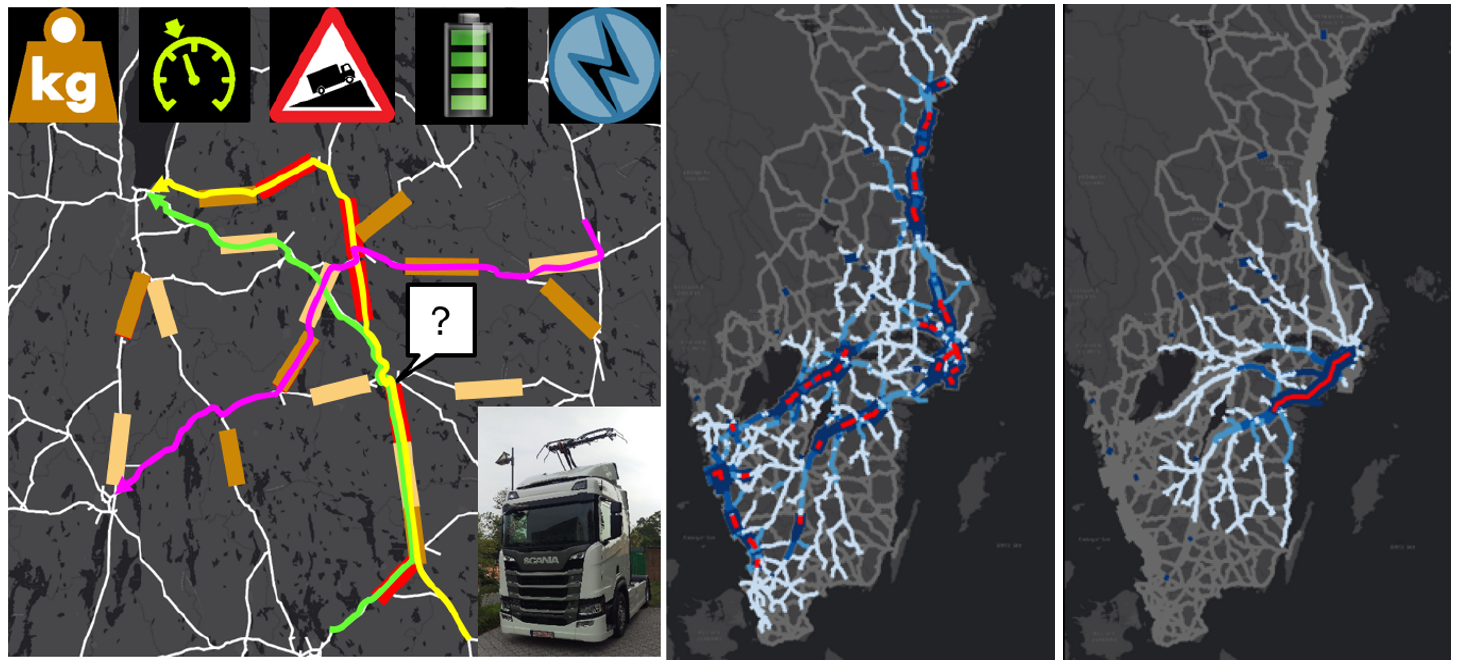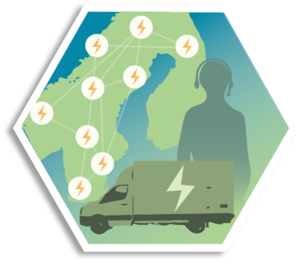TRACER

The TRACER project is expected to accelerate the electrification of the heavy freight transport industry and the realization of the positive effects thereof by deriving transport electrification scenarios that maximize the benefit and minimize the cost of electrification for all stakeholders.
Summary
Heavy Freight Trucks (HFTs) are responsible for 89% of domestic goods transport in Sweden, which in 2018 approximately corresponded to 41 Gtkm transport work and 3.4 Mt CO2 emissions. The full or partial electrification of this transport work using a combination of public and private stationary charging stations and Electric Road Systems (ERS) powered by a fossil free energy supply mix, and a mix of battery electric and plugin hybrid vehicles is a viable pathway for reaching the emission reduction targets in the road-bound heavy freight transport sector.
Considering the current and future transport demand that is serviced by the transport logistic operations (transport routes and schedules), the placement and dimensioning of charging stations and electric road segments and their energy supply, and the costs and transport capacity and range limitations of different types of electric HFTs, the “design space” of electric charging infrastructure planning and operations is enormous. To find a combination of “design parameters” that maximizes the benefit and minimizes the cost of electrification for all stakeholders is essential for the quick realization of the positive effects of electrification in the short to medium/long term.
Results of the RENO pre-studyindicate that the route-based analysis of the true energy demand of transports in space and time is essential to find design parameters that maximize the benefit and minimize the cost of electrification. In particular, electric charging infrastructure placements (using only ERS) based on route-based analysis can in general electrify 3.25 times as much transport work or require 80% less infrastructure investments as corridor placements. The TRACER project aims to provide a comprehensive decision support that allows the exploration of the design space for electric charging infrastructure planning and operations with the route-based aspects in focus.
Aim
The aim of the TRACER project is to accelerate the electrification of the heavy freight transport industry and the realization of the positive effects thereof by deriving transport electrification scenarios that maximize the benefit and minimize the cost of electrification for all stakeholders.

The main stakeholders are: vehicle manufacturers, transport service providers, energy suppliers and electric transmission grid operators, electric charging infrastructure component manufacturers, and road and transport administrations.
The objectives of the TRACER project towards this aim are as follows:
Objective 1: Adapt and develop route analytics, similar to the ones used in the RENO pre-study and apply these new analytics to real-world, high-resolution fleet management data (Terabytes of GPS route- and energy/fuel consumption logs of HFTs) to address three groups of research / knowledge gaps:
- G1: Inadequate utilization of transport route information in charging infrastructure planning
- G2: Lack of integration of different electrification solutions in charging infrastructure planning
- G3: Lack of knowledge about the management of charging infrastructure operations

